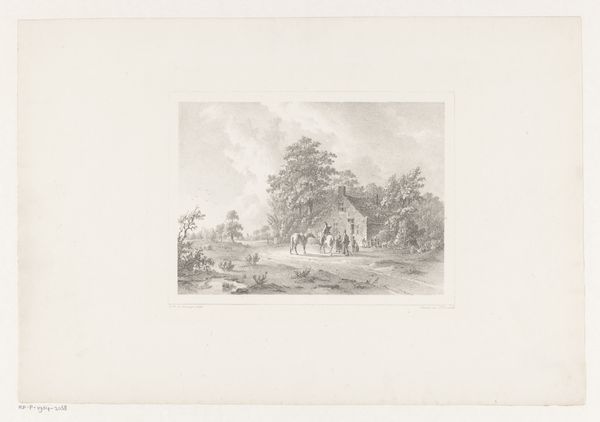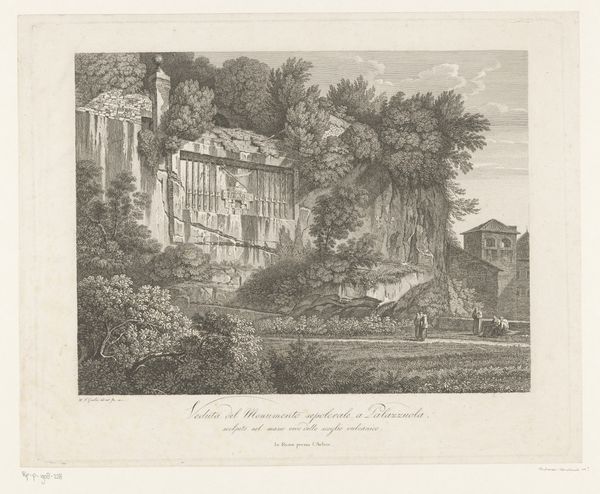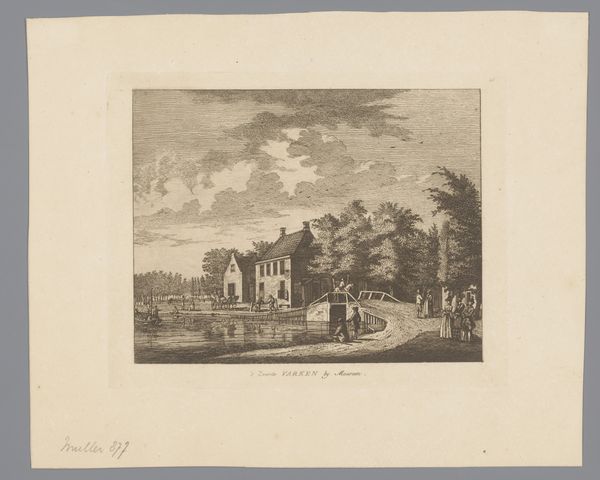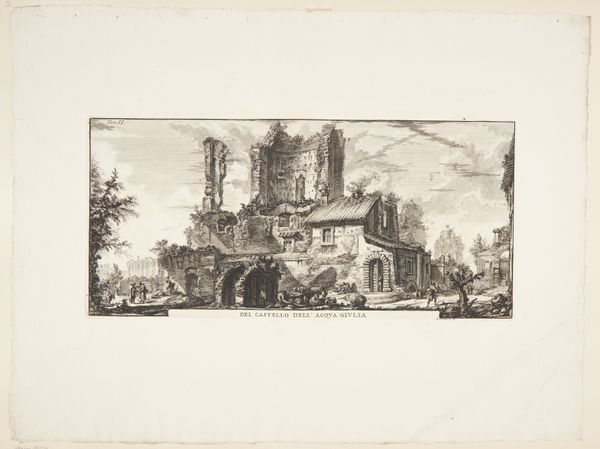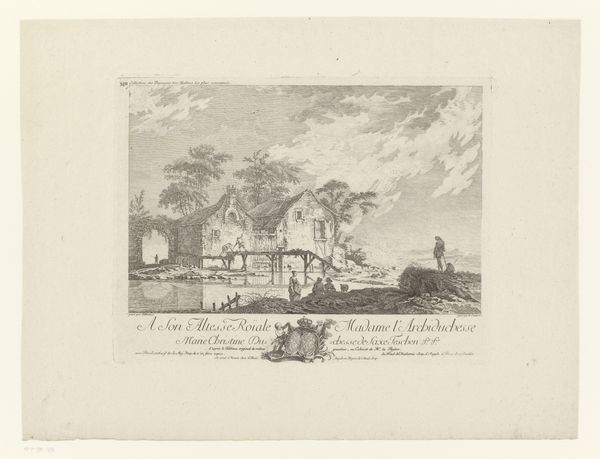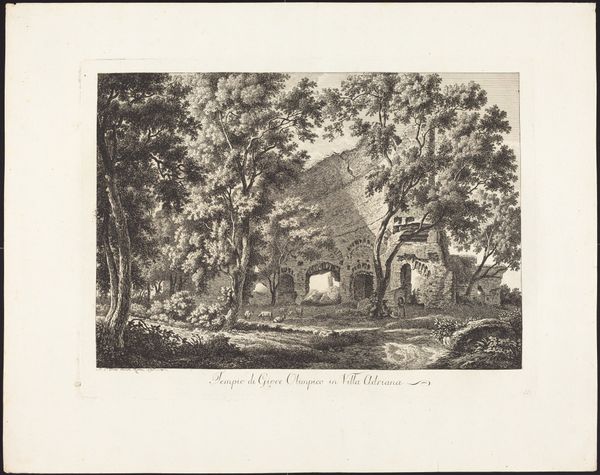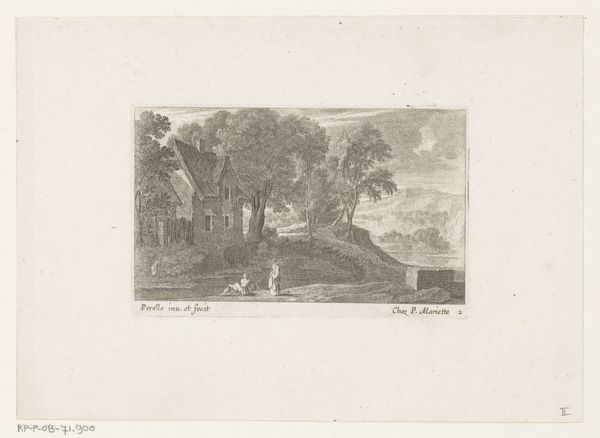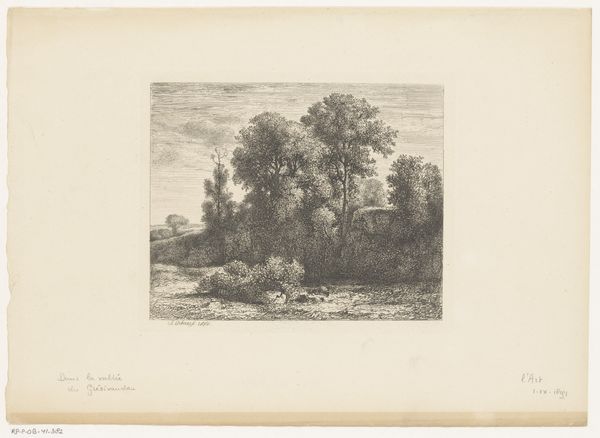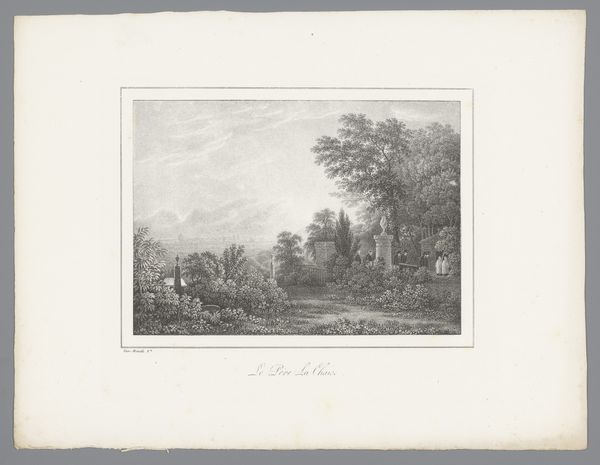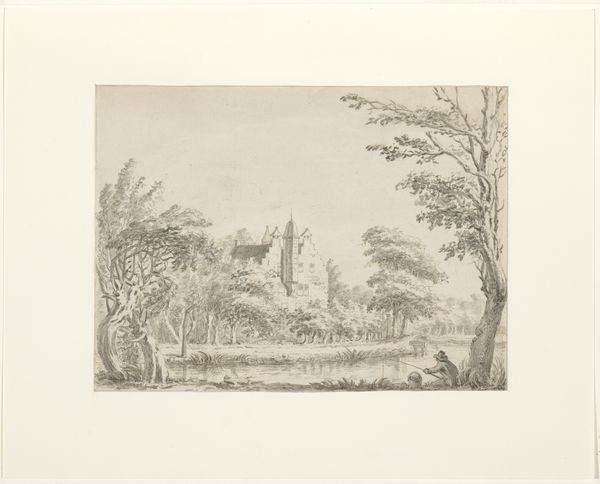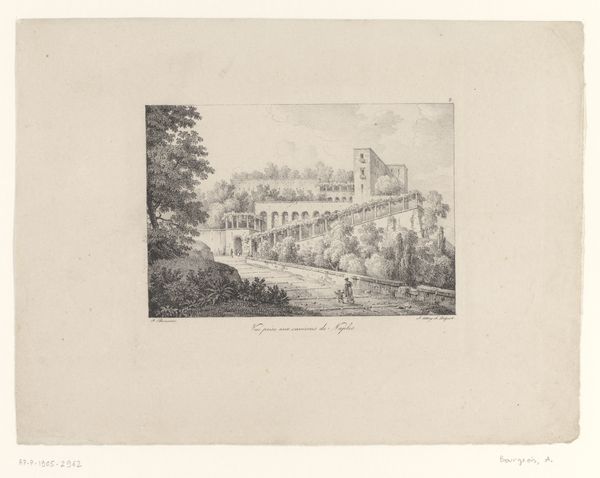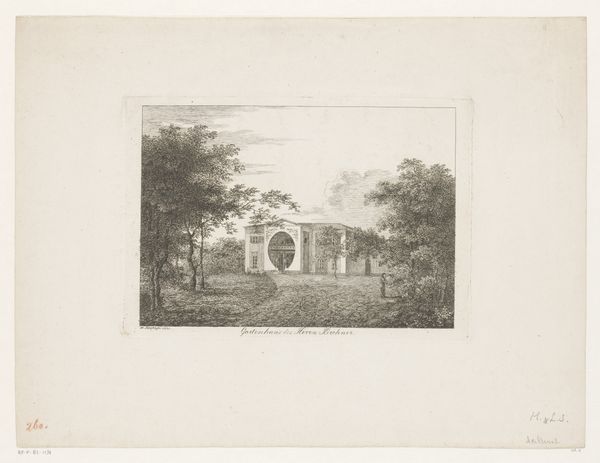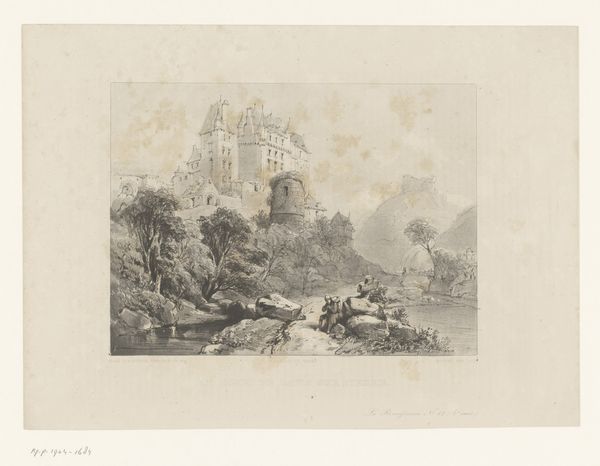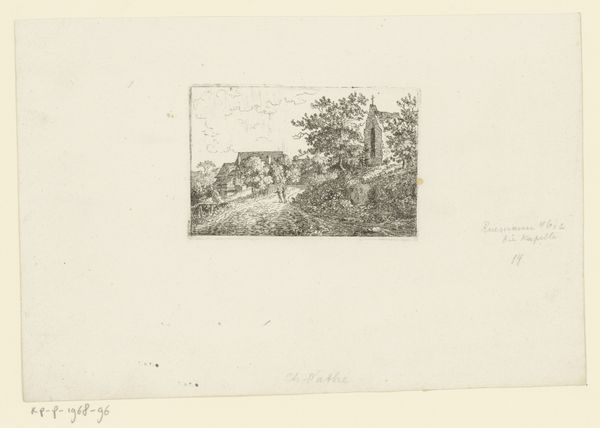
print, etching, paper, pencil, engraving
#
pencil drawn
#
ink paper printed
# print
#
etching
#
pencil sketch
#
old engraving style
#
landscape
#
house
#
paper
#
personal sketchbook
#
geometric
#
pencil
#
line
#
pencil work
#
engraving
Dimensions: height 270 mm, width 363 mm
Copyright: Rijks Museum: Open Domain
Curator: Ah, the light in this etching. It feels…melancholy, doesn't it? Like a half-remembered dream. Editor: This is "Zicht op ruïne aan de rivier de Essonne," or "View of ruins on the Essonne river," made before 1852 by François Gebhardt. It's a print, using etching, engraving and pencil on paper, I think. Curator: "Ruins"... yes, they do have that romantic decay about them. But there's life, too. I spot figures crossing a tiny bridge. Gives you this interesting contrast, doesn’t it, between what crumbles and what keeps going. Editor: The composition really guides the eye, starting from that dark cluster of trees on the left, leading us toward the ruined structure, almost like following a narrative. Notice how the linear perspective converges, drawing us into the depth of the landscape, structured in layers from dark to light. Curator: I see that geometric solidity too! It reminds me a little of Piranesi. Like someone sketching their fantasies into an overgrown reality. You feel how detailed the landscape work is! There is such a lot to see in here. I get lost! Editor: Gebhardt really harnesses the line to define form. Look at the meticulous details, those cross-hatchings rendering the light playing on the stonework. And see those lines! Very deliberate and yet incredibly organic, flowing naturally and all ending at certain places! Curator: There's a human warmth as well. You can almost feel the heat of a distant fireplace within that ruin, that's got smoke going on, or is that some natural, visual texture going on? This feels nostalgic in some strange ways, you could have spent a lazy summer afternoon sketching it, then you come away, put the radio on, sip your beer, and reminisce it... Editor: It really captures a specific kind of 19th-century sensibility, focusing on the beauty found even in the remains of past grandeur and the visual structures on which our perspective are based. So… quite thought provoking! Curator: And that’s the best kind of art, right? That whispers, "Look deeper," even as the stones are falling down.
Comments
No comments
Be the first to comment and join the conversation on the ultimate creative platform.
